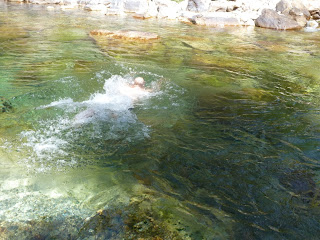I periodically visit my friend and neighbor Tim Anderson at the Control Tower of the former Alameda Naval Air Station where he both lives and works. Most recently, I delivered some sawdust to him for use in his composting toilet and as is usually the case, Tim offers me something in return, in this case, a vinyl banner. I am not exactly sure where these large sheets of plastic are used, but they have the look of something that hangs up in an exhibition hall at a trade show. Once the trade show is over, the banners get tossed or at least recycled and that is how Tim got them. And then I got one.
So far, this is all very boring, but wait, the plot thickens.
One of the challenges of skin boat building is to use opportunistically gotten materials to build them. Old wood or even new wood that does not come from a lumber yard is fairly easy to come by. So is string. The only thing I typically have to buy and cant easily get in a pre-used form is the skin. So enter Tim Anderson with the vinyl banners. I havent tried them yet as a skin boat cover but imagine that they will work, even if the are a little heavy.
So this is the tie in with the post apocalyptic theme. In a world where industrial manufacturing has collapsed
where does one get materials from? If the manufacturing system has just collapsed, the most obvious way to get materials is to scavenge. All the stuff that was manufactured will still be available, only not necessarily in stores. One may have to re-purpose goods made for other applications.
And if you havent been following the blog for long and you are wondering where the post apocalyptic theme intersects with skin boat building, let me explain. Skin boat building is a technology developed in a pre-industrial environment. No manufactured goods were available. All materials had to be scavenged. In the current state of our society, skin boats can and typically are constructed out of materials that are the output of an industrial manufacturing stream. But occasionally, I try to build boats that could conceivably be built in an environment where the industrial manufacturing stream has ceased to flow.

I havent tried the vinyl banners as a boat skin yet, but am currently using one to keep the UV off my skin boats. I am also thinking of the vinyl as a potential yurt cover. More on that later.
Read More..
So far, this is all very boring, but wait, the plot thickens.
One of the challenges of skin boat building is to use opportunistically gotten materials to build them. Old wood or even new wood that does not come from a lumber yard is fairly easy to come by. So is string. The only thing I typically have to buy and cant easily get in a pre-used form is the skin. So enter Tim Anderson with the vinyl banners. I havent tried them yet as a skin boat cover but imagine that they will work, even if the are a little heavy.
So this is the tie in with the post apocalyptic theme. In a world where industrial manufacturing has collapsed
where does one get materials from? If the manufacturing system has just collapsed, the most obvious way to get materials is to scavenge. All the stuff that was manufactured will still be available, only not necessarily in stores. One may have to re-purpose goods made for other applications.
And if you havent been following the blog for long and you are wondering where the post apocalyptic theme intersects with skin boat building, let me explain. Skin boat building is a technology developed in a pre-industrial environment. No manufactured goods were available. All materials had to be scavenged. In the current state of our society, skin boats can and typically are constructed out of materials that are the output of an industrial manufacturing stream. But occasionally, I try to build boats that could conceivably be built in an environment where the industrial manufacturing stream has ceased to flow.

I havent tried the vinyl banners as a boat skin yet, but am currently using one to keep the UV off my skin boats. I am also thinking of the vinyl as a potential yurt cover. More on that later.


















































